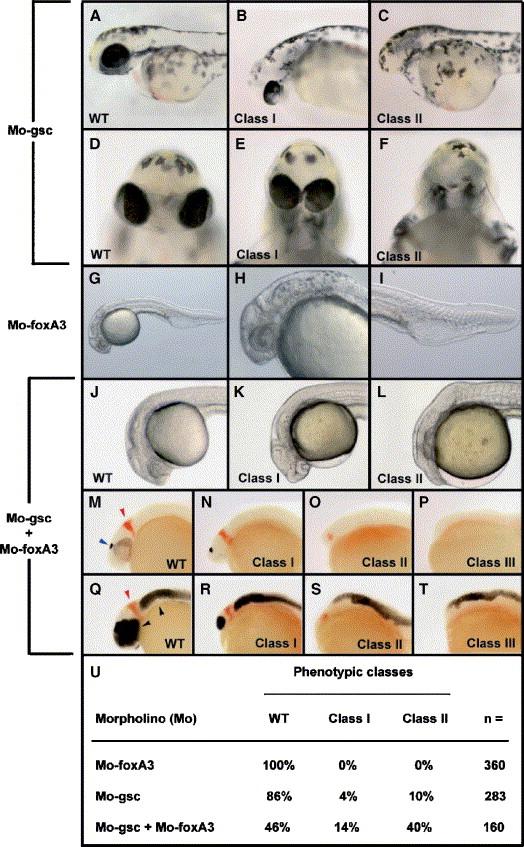Fig. 2 foxA3 inactivation enhances gsc loss-of-function phenotype. (A?F) Inactivation of gsc leads to head structure alterations ranging from cyclopia (class I, B and E) to a complete deletion of the anterior head (class II, C and F). (G?I) Morpholino knock-down of foxA3 results in an expansion of ventro-caudal mesenchyme (G and I) whereas the head is unaffected (H). (J?T) Double inactivation of gsc and foxA3 results in head truncation visible morphologically as a cyclopia (class I, K) or a complete deletion of anterior head (class II, L). Analysis after in situ hybridization with otx5 (epiphysis, blue, M?P) and eng2 (MHB, red, M?P) or (Q?T) with pax6 (eye, forebrain, blue) and eng2 (red) reveals much stronger phenotypes including complete loss of anterior structures from telencephalon up to MHB (class III). (U) The penetrance of class I and class II phenotypes analyzed at 24 hpf in Mo-gsc plus Mo-foxA3 injected embryos (20 pg each Mo) was also strongly enhanced compared to the Mo-foxA3 (20 pg) or Mo-gsc (20 pg) injected groups. (A?C; G?T) Lateral view, (D?F) front view. (A?F) Embryos at 36 hpf; (G?T) embryos at 24 hpf.
Reprinted from Developmental Biology, 290(1), Seiliez, I., Thisse, B., and Thisse, C., FoxA3 and goosecoid promote anterior neural fate through inhibition of Wnt8a activity before the onset of gastrulation, 152-163, Copyright (2006) with permission from Elsevier. Full text @ Dev. Biol.

